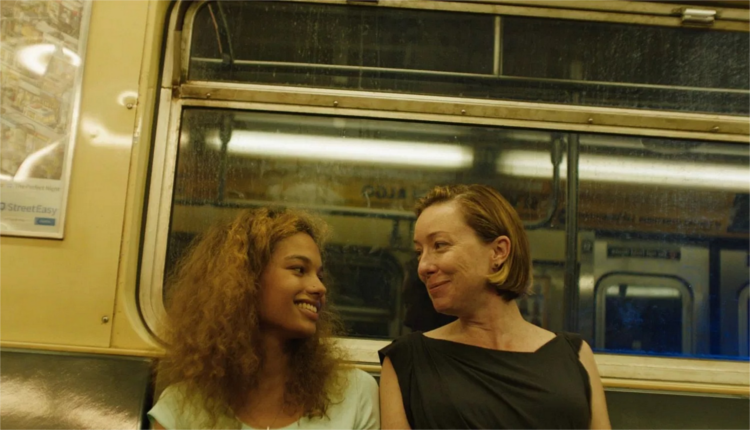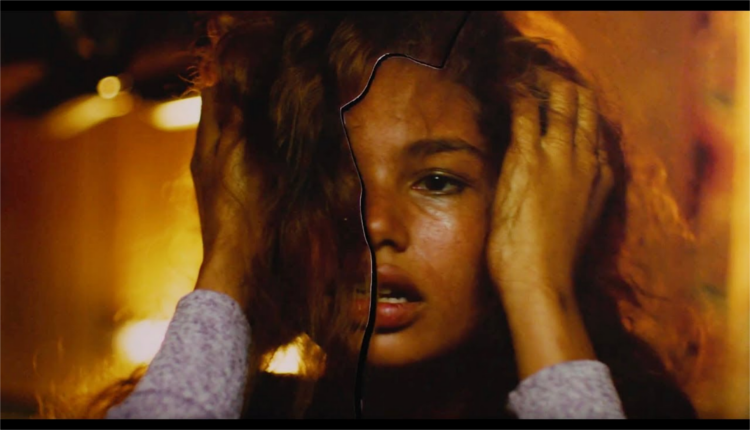Film Review | Madeline’s Madeline Unearths a Darker Coming-of-Age Story
Josephine Decker’s bewildering new film, Madeline’s Madeline, won’t get its awards season due. It’s a difficult film, though, rife with trauma and framed by a restless, fractured lens, and so it’s probably better off as a chance discovery anyway. The Oscars and other popular awards shows applaud the new and exciting in cinema, but Madeline’s Madeline isn’t that kind of new. It’s the kind of new that comes from turning a familiar coming-of-age story upside down and inside out and dipping it in sludge.
Think of it, in a sense, as the anti-Lady Bird. Both films heavily feature mother-daughter bickering, but where Lady Bird imbues its life lessons with a sense of hope, Madeline’s Madeline goes darker and deeper, foregoing hope in search of any sense of lucidity whatsoever. The film’s titular protagonist, like Christine “Lady Bird” McPherson, is a teenage girl in fierce pursuit of independence. But the similarities end there.
The film begins as an ASMR video might. Through cinematographer Ashley Connors’ hazy lens, we hear a voice whispering to us: “What you are experiencing is just a metaphor. The emotions you are having are not your own.” As the camera gains focus we see that the speaker is a young woman dressed as a nurse. As if to dispel any probable confusion, she adds: “You are not the cat. You are inside the cat.” But who is inside the cat?
Madeline, the film’s adolescent vessel, is soon revealed as our cat inhabitant. A mixed-race 16-year-old from New York, Madeline is an astonishingly talented actress (as is Helena Howard, who plays her). But her troubled history, included an unspecified mental illness and a tempestuous relationship with her mother (Miranda July), matches the intensity of her performances. More often than not, in fact, the line between performance and reality is blurred entirely. Is the Madeline on stage, who alternately dazzles and horrifies her co-stars, or the Madeline at home, who refuses to eat and dreams of smashing her mother’s hand with an iron, the real Madeline?
The performance within the film is the work of an experimental theater troupe led by a forty-something woman named Evangeline (a fiery, yellow-eyed Molly Parker). Like Regina, Madeline’s mother, Evangeline is especially tender with Madeline, lauding her skill and building her up in the face of bitter colleagues. But while Regina continuously reels Madeline in out of fear, Evangeline attempts to draw her further and further outward, transforming her raw potential into something fully realized. It’s obvious that both women genuinely care for Madeline, but it’s also clear that their actions are not always in her best interest.
At home, Regina often invokes Madeline’s mental illness and apparent stint in an institution as means of protecting her. This tends to result in an argument. In one instance, when Madeline and two boys are caught watching porn, Regina forces the boys to sit and continue watching the video while she sits there. Fed up, she screams at them to get out of the house, and Madeline, mortified, yanks a lock of hair out of her head. This is real violence, unlike the dream with the iron, but even that dream, which Madeline later tells to Evangeline in a moment of vulnerability, has a sense of foreboding to it. Is it possible, with reality so purposefully murky, that it’s not a dream at all?
Evangeline’s influence on Madeline, although seemingly positive, is not necessarily any healthier. Her extraction method, which at first seems therapeutic, turns Madeline’s ongoing struggles with mental illness into a work of art. But it’s Evangeline’s work of art, not Madeline’s. The troupe’s ever-changing performance, with Madeline at the center, gives Evangeline’s other performers a growing sense of unease. Late in the film, as Regina watches, Madeline mimics her mother in an improvisational exercise. It starts mockingly, as she chides herself for her appetite and general misbehavior, but ends violently, as she cowers in fear from herself, iron in hand, ready to strike.

As a new kind of coming-of-age film, Madeline’s Madeline spends plenty of time picking away at Madeline’s inner life. Her incredible ability as a performer is her one saving grace, but in moments away from the theater it also inhibits her potential for healthy behavior. When she performs outside of the theater, by attempting to seduce Evangeline’s husband or mimicking a homeless man in Times Square, she establishes the isolating self-fulfilling prophecy of her own mental illness. Like any teenager, Madeline is desperate to fit in, but what Decker’s film does best — and what makes it so perverse — is fully realize Madeline’s heartbreaking efforts to self-sabotage. Even her great talent, which helps her become the youngest and most impressive member of Evangeline’s theater troupe, threatens further isolation. In the end, it’s not clear whether we’re supposed to interpret Madeline’s journey as one of self-discovery or self-immolation.
One of the film’s greatest strengths is that it’s uninterested in offering much of an interpretation, however much it begs one. The narrative is established, immediately, as a metaphor, but when Evangeline hears Madeline describe their play as such, she refutes her. If we’re to see Evangeline, the avant-garde director, as a stand-in for Decker herself, the question is complicated even further. Which is the metaphor: the film itself, or the performance within the film? And, regardless of semantics, what is it a metaphor for?

Decker may not be any closer to answering this question than we are. Instead, in an interview with Vanity Fair, she points to something else entirely. “There’s these huge conversations that we don’t have societally that are really important,” she says. “Parts of ourselves that are perverse, or that want to put on a pig head and turn into a homeless man walking down the street. You know, that’s liberating and free.”
Freedom, to someone as erratic as Madeline, is dangerous. But it’s a right, especially for someone both insulated and exploited, to seek liberation.

